
The Enchanting Chamarel Coloured Earth: Nature’s Painted Canvas
Discover the surreal landscape of Chamarel Coloured Earth in Mauritius, where vibrant sand dunes create a breathtaking natural canvas. Perfect for nature and photography enthusiasts.
Chamarel Coloured Earth in Mauritius is a mesmerizing natural wonder known for its vibrant, multi-hued sand dunes. Located in the south-western part of the island, this geological curiosity is a must-see for anyone visiting Mauritius. The dunes, in shades of red, brown, violet, blue, green, and yellow, create an almost surreal landscape that is both fascinating and beautiful. The unique coloration is believed to be caused by the cooling of molten volcanic rock at different temperatures. The result is a stunning display of natural artistry that seems almost otherworldly. The best time to visit is during the early morning or late afternoon when the sun’s angles enhance the colors, making them appear even more vivid. In addition to the Coloured Earth, the site also features a small park with giant tortoises and a café where you can enjoy a refreshing drink while taking in the panoramic views. Nearby, the Chamarel Waterfall offers another breathtaking natural spectacle, making this area a perfect day trip for nature lovers and photography enthusiasts alike.
Local tips in Chamarel Coloured Earth
- Visit early in the morning or late afternoon to see the colors at their most vibrant.
- Don’t forget your camera; the Coloured Earth offers excellent photo opportunities.
- Wear comfortable walking shoes as the terrain can be uneven.
- Combine your visit with a trip to the nearby Chamarel Waterfall for a complete experience.
- Check out the on-site café for a relaxing break with a beautiful view.
The Enchanting Chamarel Coloured Earth: Nature’s Painted Canvas
Chamarel Coloured Earth in Mauritius is a mesmerizing natural wonder known for its vibrant, multi-hued sand dunes. Located in the south-western part of the island, this geological curiosity is a must-see for anyone visiting Mauritius. The dunes, in shades of red, brown, violet, blue, green, and yellow, create an almost surreal landscape that is both fascinating and beautiful. The unique coloration is believed to be caused by the cooling of molten volcanic rock at different temperatures. The result is a stunning display of natural artistry that seems almost otherworldly. The best time to visit is during the early morning or late afternoon when the sun’s angles enhance the colors, making them appear even more vivid. In addition to the Coloured Earth, the site also features a small park with giant tortoises and a café where you can enjoy a refreshing drink while taking in the panoramic views. Nearby, the Chamarel Waterfall offers another breathtaking natural spectacle, making this area a perfect day trip for nature lovers and photography enthusiasts alike.
When is the best time to go to Chamarel Coloured Earth?
Iconic landmarks you can’t miss
Chamarel Seven Colored Earth Geopark
Explore the breathtaking Chamarel Seven Colored Earth Geopark, a vibrant natural wonder of Mauritius showcasing unique geological beauty and rich biodiversity.
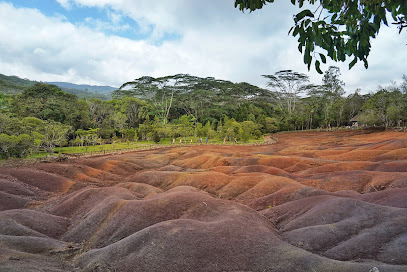
Casela Nature Parks
Immerse yourself in adventure and wildlife at Casela Nature Parks, a premier amusement park and zoo in Mauritius, perfect for families and thrill-seekers.
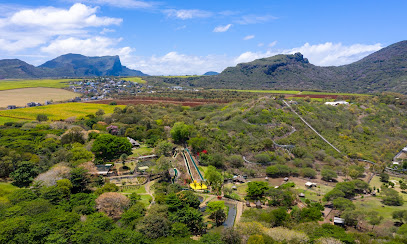
La Vallée Des Couleurs Nature Park
Explore the vibrant landscapes and thrilling adventures at La Vallée Des Couleurs Nature Park in Mauritius, a true natural wonder for every traveler.
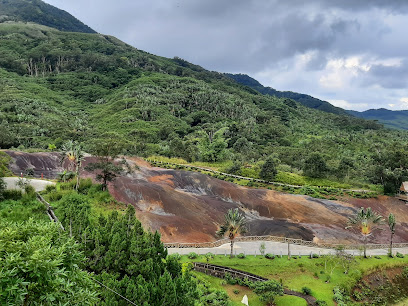
Chamarel Waterfall
Discover the breathtaking Chamarel Waterfall, a natural wonder in Mauritius offering stunning views and serene landscapes perfect for tourists.
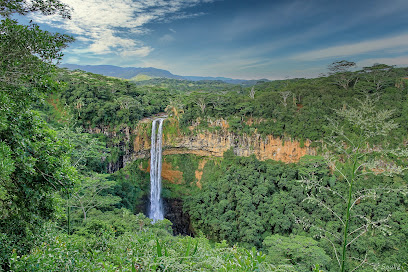
Black River Gorges National Park
Discover the stunning landscapes and rich biodiversity of Black River Gorges National Park, a must-visit natural wonder in Mauritius.
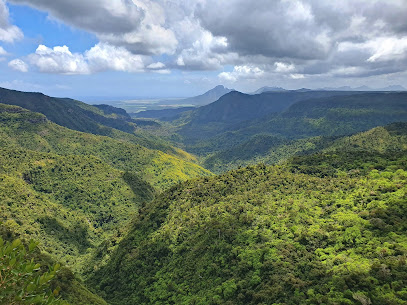
Rhumerie de Chamarel Restaurant & Rum Distillery
Discover the rich flavors and breathtaking views at Rhumerie de Chamarel, Mauritius' premier rum distillery and restaurant in Chamarel.
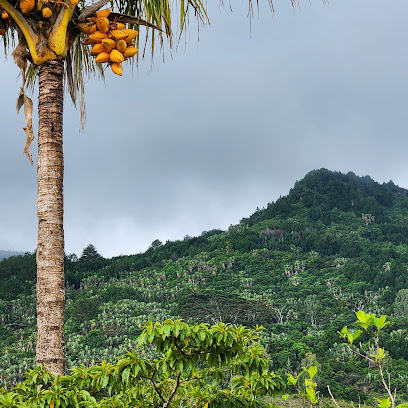
Gorges Viewpoint
Discover the stunning vistas and serene beauty of Gorges Viewpoint, a must-see attraction in Mauritius offering breathtaking panoramas.
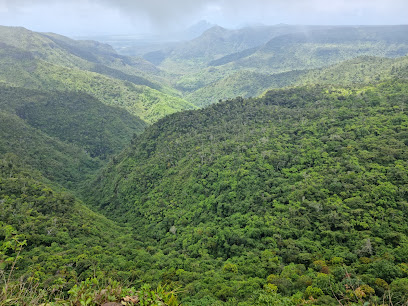
Curious Chamarel
Explore the captivating landscapes and unique attractions of Curious Chamarel in Mauritius, a perfect destination for nature lovers and adventure seekers.
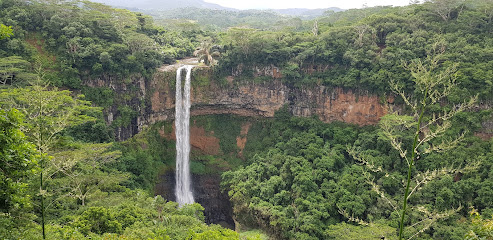
Le Chamarel Restaurant
Experience the essence of Mauritian flavors and breathtaking views at Le Chamarel Restaurant, a culinary treasure in the heart of Chamarel.
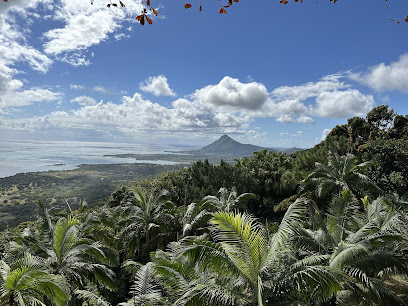
Rochester Falls
Experience the breathtaking beauty of Rochester Falls, a natural wonder in Mauritius, perfect for nature lovers and adventure seekers alike.
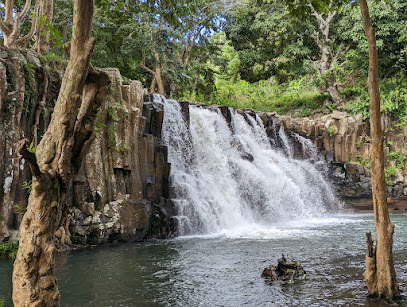
Captain Matthew Flinders Monument
Explore the Captain Matthew Flinders Monument in Mauritius, a historical landmark celebrating maritime exploration amid breathtaking natural beauty.
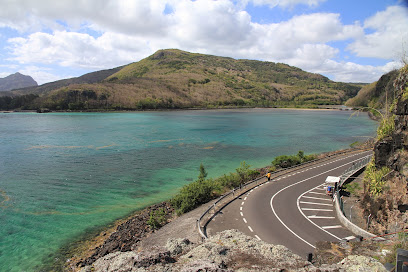
Alexandra Falls
Experience the breathtaking beauty of Alexandra Falls, a serene natural wonder nestled in the lush landscapes of Mauritius, perfect for nature lovers and adventurers.
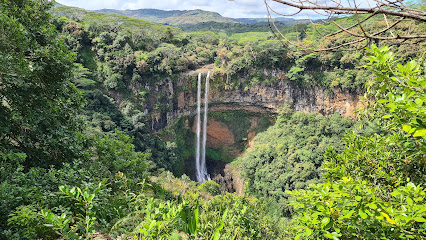
Ebony Forest Reserve Chamarel
Discover the breathtaking Ebony Forest Reserve in Chamarel, a nature preserve showcasing Mauritius' unique biodiversity and stunning landscapes.
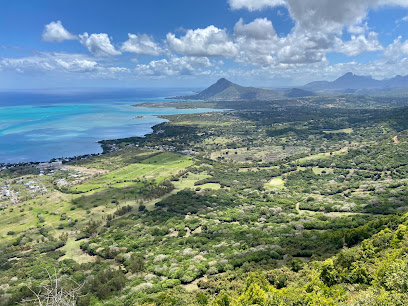
Palais de Barbizon
Discover the flavors of Mauritius at Palais de Barbizon, a charming restaurant in the heart of Chamarel, surrounded by stunning natural beauty.
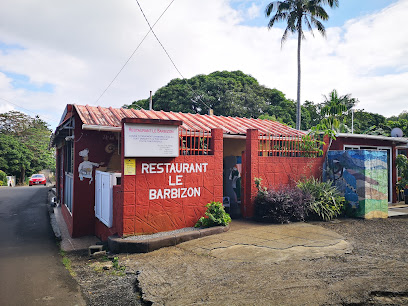
Chamarel View Point
Discover the breathtaking beauty of Mauritius at Chamarel View Point, where stunning landscapes and vibrant natural colors await.
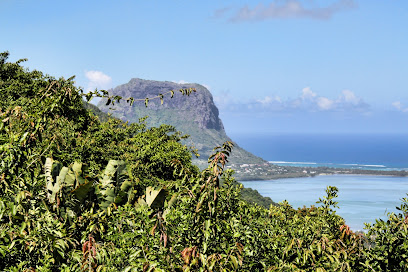
Unmissable attractions to see
Rhumerie de Chamarel Restaurant & Rum Distillery
Savor the unique flavors of Mauritius at Rhumerie de Chamarel, a restaurant and rum distillery nestled in the island's stunning hills.
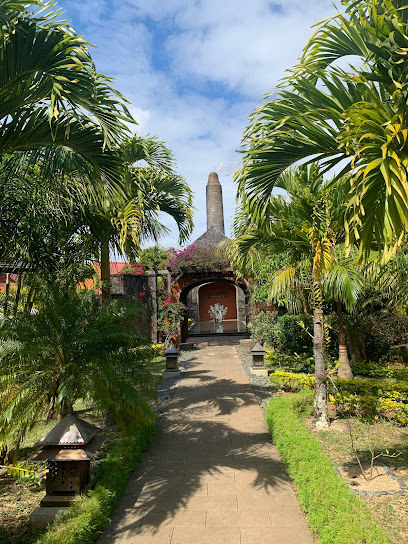
Rochester Falls
Explore the stunning Rochester Falls in Mauritius, a serene waterfall surrounded by lush nature, perfect for relaxation and photography.
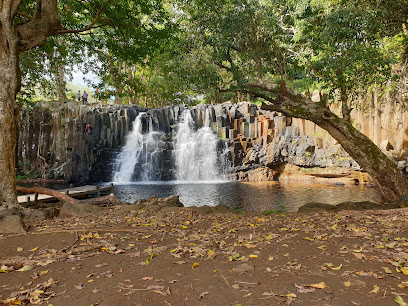
Captain Matthew Flinders Monument
Discover the Captain Matthew Flinders Monument, a historical landmark in Mauritius that celebrates exploration and offers breathtaking views.
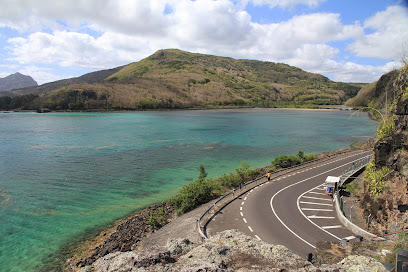
Dolswim Ltd
Discover the thrill of whale watching with Dolswim Ltd in Grand Riviere Noire, Mauritius, where adventure meets stunning coastal beauty.

Dolphin Warrior - swimming with dolphins
Experience the thrill of swimming with dolphins in Mauritius at Dolphin Warrior, where adventure meets the beauty of the ocean.
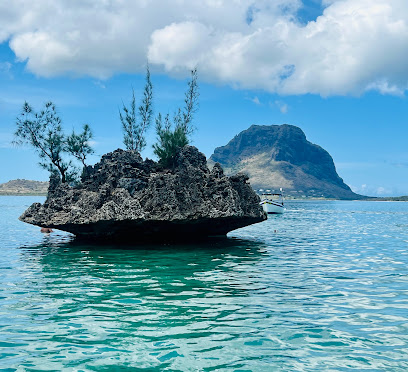
JPH Charters (Point of embarkation)
Explore the breathtaking waters of Black River with JPH Charters, offering unforgettable fishing and sailing adventures in Mauritius.
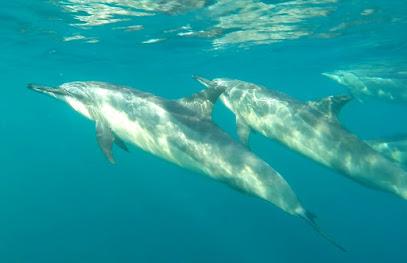
Sophie Nature Walk
Explore the tranquil beauty of Sophie Nature Walk, a serene nature preserve in Vacoas-Phoenix, perfect for nature lovers and peaceful strolls.

View. Point
Discover the stunning vistas of Vacoas-Phoenix View Point in Mauritius, a perfect blend of nature and tranquility for every traveler.

Piton de la Petite Rivière Noire
Discover the breathtaking landscapes and exhilarating hiking trails at Piton de la Petite Rivière Noire, a natural wonder in Mauritius.

Le morne Tamarin Viewpoint
Discover the stunning beauty of Le Morne Tamarin Viewpoint, a top scenic spot in Mauritius offering breathtaking views and rich cultural history.
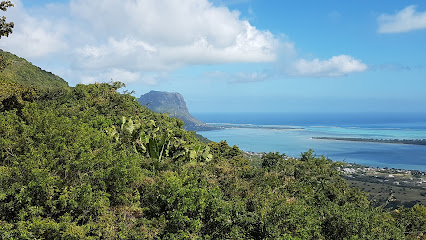
Black River Visitors Centre
Experience the beauty of Mauritius at Black River Visitors Centre, a national park offering stunning landscapes, rich biodiversity, and unforgettable adventures.
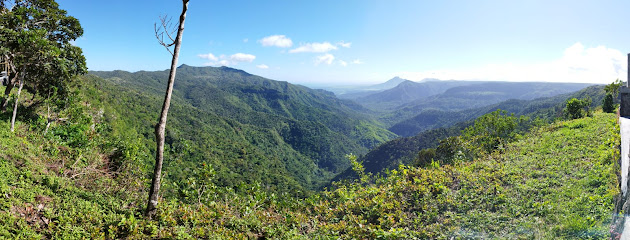
Seven Colored Earth Ground Zero
Explore the mesmerizing Seven Colored Earths, a unique natural landmark in Mauritius showcasing vibrant dunes of stunning colors and rich geological history.
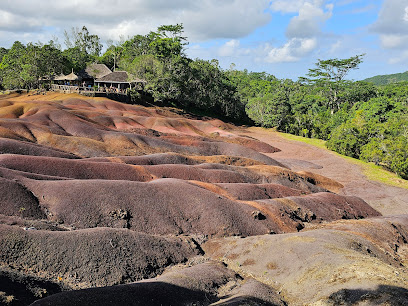
Plaines Champagne
Explore the breathtaking landscapes and serene beauty of Plaines Champagne, a hidden gem in Mauritius perfect for nature lovers and adventurers.
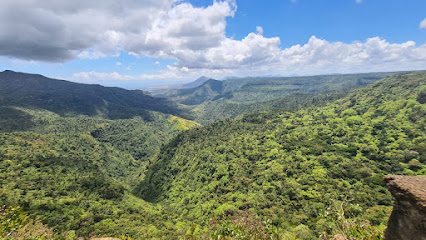
zip line adventure
Soar through the skies on an exhilarating zip line adventure in La Gaulette, Mauritius, and experience unparalleled views of the island's stunning landscapes.
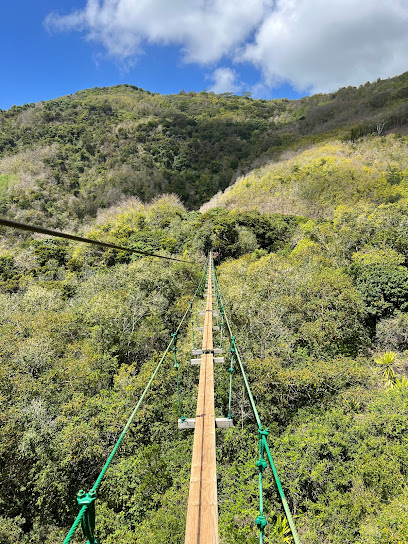
La gaulette
Experience the breathtaking beauty and vibrant culture of La Gaulette, a coastal paradise in Mauritius perfect for relaxation and adventure.
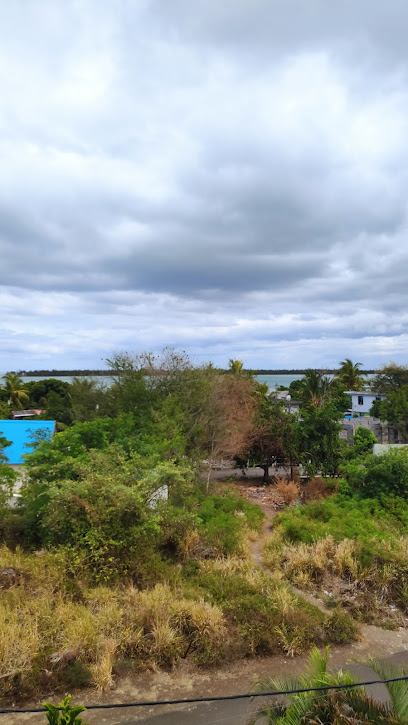
Essential places to dine
Rhumerie de Chamarel Restaurant & Rum Distillery
Experience the exquisite blend of local flavors and authentic rum at Rhumerie de Chamarel in beautiful Mauritius.
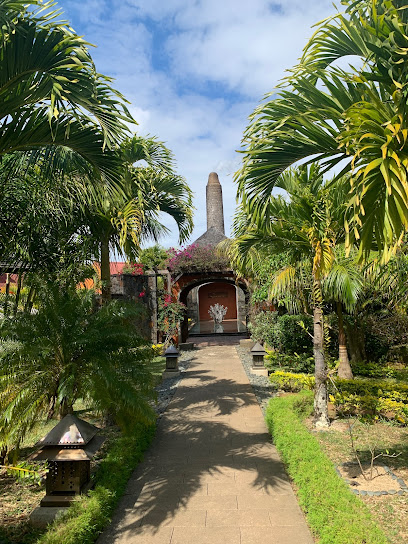
Le Chamarel Restaurant
Experience exquisite Mauritian cuisine with breathtaking views at Le Chamarel Restaurant – a true culinary delight in Mauritius.
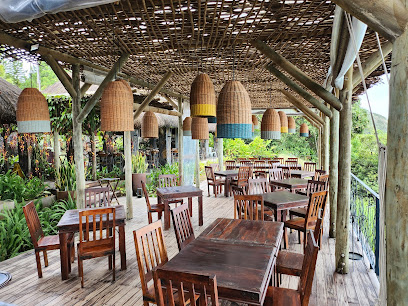
Palais de Barbizon
Discover the authentic taste of Mauritius at Palais de Barbizon in Chamarel – where every dish tells a story.
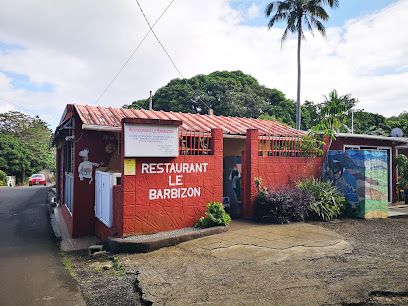
Chez Ruben Restaurant
Discover the flavors of Mauritius at Chez Ruben Restaurant in Chamarel – where local cuisine meets breathtaking views.
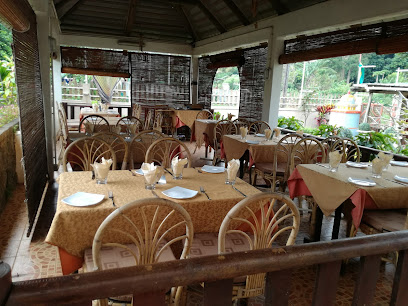
Lakaz Chamarel Exclusive Lodge
Experience luxury and nature at Lakaz Chamarel Exclusive Lodge in Mauritius - your perfect getaway in a stunning tropical paradise.

Restaurant Les Palmiers Chez Dev
Experience authentic Mauritian cuisine at Restaurant Les Palmiers Chez Dev in scenic Chamarel - where flavor meets breathtaking views.
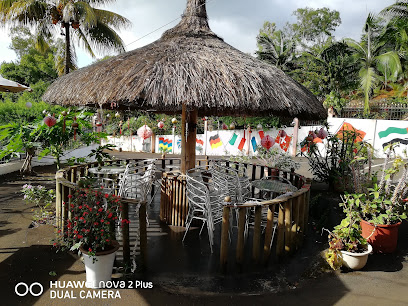
Saveur Tropical
Experience authentic Mauritian cuisine with breathtaking views at Saveur Tropical in Chamarel.
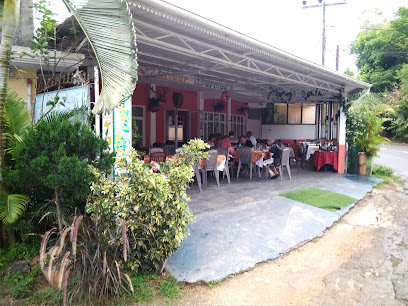
Mich Resto
Experience authentic Mauritian cuisine amidst breathtaking landscapes at Mich Resto in Chamarel.
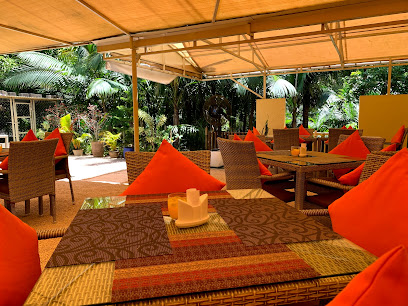
Chez Pierre Paul
Experience authentic Mauritian flavors at Chez Pierre Paul in Chamarel – a culinary treasure surrounded by stunning natural beauty.

La Citronelle
Discover La Citronelle: A charming restaurant in Chamarel offering exquisite Mauritian and European cuisine amidst stunning natural beauty.
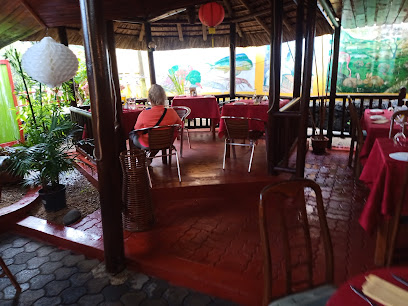
One Love Snack
Experience authentic Mauritian flavors at One Love Snack in Chamarel – where every bite tells a story.
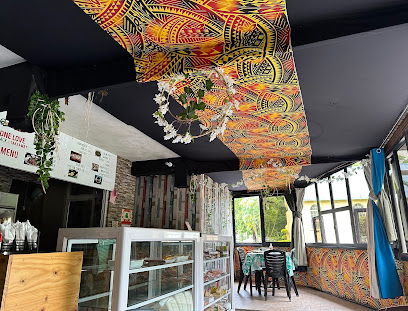
La Marmite De Chamarel
Experience authentic Mauritian cuisine amidst breathtaking views at La Marmite De Chamarel - a culinary gem in Mauritius.
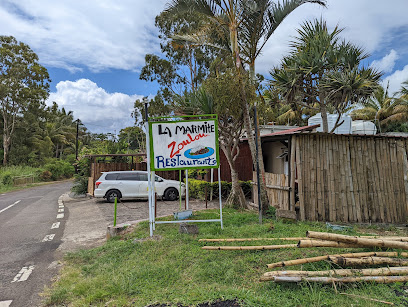
Chez M Chamarel
Experience authentic Mauritian cuisine amidst breathtaking views at Chez M Chamarel – a culinary gem in the heart of Chamarel.
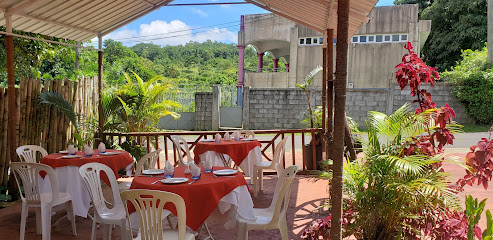
La table du currybou
Discover authentic Mauritian flavors at La Table du Currybou - where every dish tells a story amidst breathtaking natural beauty.
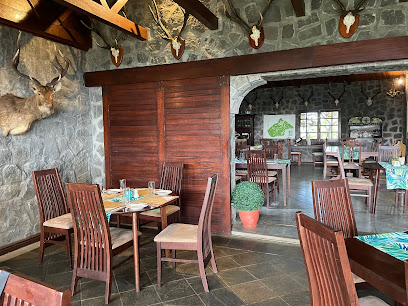
Noel Desirée Ave
Experience the flavors of Mauritius at Noel Desirée Ave, where local cuisine meets breathtaking views in the heart of Chamarel.
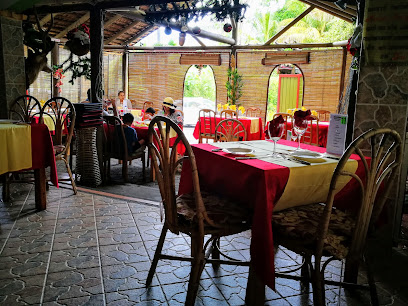
Markets, malls and hidden boutiques
Chamarel Seven Colored Earth Geopark
Discover the breathtaking beauty of Chamarel Seven Colored Earth Geopark, a natural wonder in Mauritius showcasing vibrant colored sands and rich biodiversity.
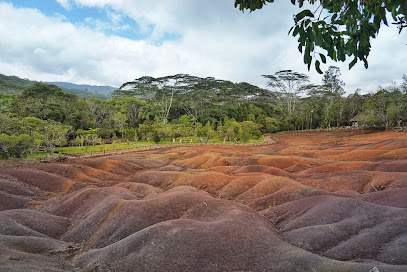
Curious Chamarel
Explore the stunning landscapes and unique geological wonders at Curious Chamarel, a must-visit attraction in Mauritius for nature lovers and adventure seekers.
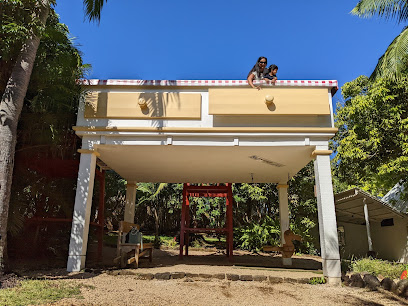
Seven Colored Earth Ground Zero
Discover the vibrant hues of Seven Colored Earth Ground Zero, a stunning natural landmark in Mauritius that captivates with its breathtaking beauty and geological wonder.

Essential bars & hidden hideouts
Chez Ruben Restaurant
Discover authentic Mauritian cuisine at Chez Ruben Restaurant in the scenic Chamarel region, where flavor meets breathtaking views.
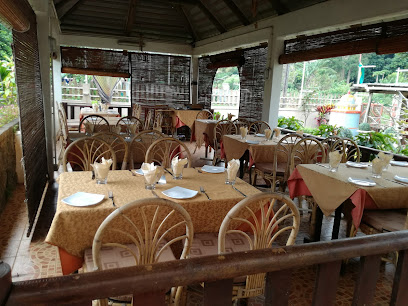
Noel Desirée Ave
Experience the authentic flavors of Mauritius at Noel Desirée Ave, where culinary excellence meets breathtaking views in Chamarel.
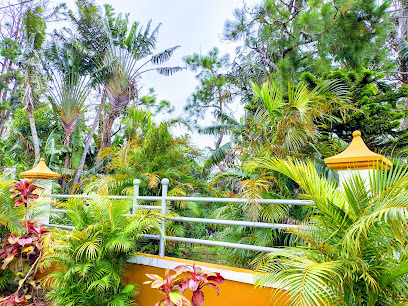
View Bar
Discover the tranquil beauty of Chamarel at View Bar, where stunning views and refreshing drinks create an unforgettable experience.

Vue Sur Chamarel
Discover the flavors of Mauritius at Vue Sur Chamarel, where exquisite cuisine meets breathtaking views in a serene setting.
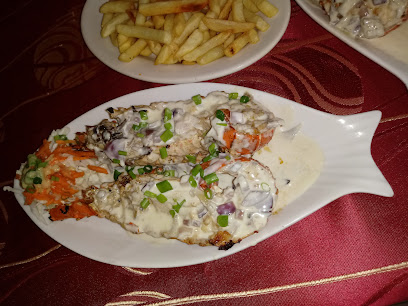
Local Phrases about Chamarel Coloured Earth
-
- HelloBonjour
[Bon-zhoor] - GoodbyeAu revoir
[Oh rev-wah] - YesWi
[Wee] - NoNon
[Non] - Please/You're welcomeS'il vous plaît/De rien
[Seel voo pleh/Dee ree-an] - Thank youMerci
[Mehr-see] - Excuse me/SorryExcusez-moi/Pardon
[Ex-koo-zay mwa/Par-dohn] - How are you?Comment allez-vous?
[Koh-mohn tah-lay voo] - Fine. And you?Bien. Et vous?
[Byehn. Ay voo] - Do you speak English?Parlez-vous anglais?
[Par-lay voo ahn-glay] - I don't understandJe ne comprends pas
[Zhuh nuh kohm-prahn pah]
- HelloBonjour
-
- I'd like to see the menu, pleaseJe voudrais voir le menu, s'il vous plaît
[Zhuh voo-dray vwar luh meh-noo, seel voo pleh] - I don't eat meatJe ne mange pas de viande
[Zhuh nuh mahnj pah duh vyand] - Cheers!Santé!
[Sahn-tay] - I would like to pay, pleaseJe voudrais payer, s'il vous plaît
[Zhuh voo-dray pay-ay, seel voo pleh]
- I'd like to see the menu, pleaseJe voudrais voir le menu, s'il vous plaît
-
- Help!Au secours!
[Oh se-coor] - Go away!Allez-vous en!
[Ah-lay voo ahn] - Call the Police!Appelez la police!
[Ah-peh-lay lah po-lees] - Call a doctor!Appelez un médecin!
[Ah-peh-lay uh mayd-sahn] - I'm lostJe suis perdu
[Zhuh swee pair-doo] - I'm illJe suis malade
[Zhuh swee mah-lahd]
- Help!Au secours!
-
- I'd like to buy...Je voudrais acheter...
[Zhuh voo-dray zah-shtay...] - I'm just lookingJe regarde juste
[Zhuh ruh-gard zhoo-st] - How much is it?Combien ça coûte?
[Kohm-byen sah koot] - That's too expensiveC'est trop cher
[Say troh shair] - Can you lower the price?Pouvez-vous baisser le prix?
[Poo-vay voo bey-say luh pree]
- I'd like to buy...Je voudrais acheter...
-
- What time is it?Quelle heure est-il?
[Kell uhr eh-teel] - It's one o'clockIl est une heure
[Eel eh tew-nuhr] - Half past (10)Dix heures et demie
[Dees uhr eh duh-mee] - MorningMatin
[Mah-tan] - AfternoonAprès-midi
[Ah-preh-mee-dee] - EveningSoir
[Swahr] - YesterdayHier
[Yehr] - TodayAujourd'hui
[Oh-zhoor-dwee] - TomorrowDemain
[Duh-mahn] - 1Un
[Ehn] - 2Deux
[Duh] - 3Trois
[Twa] - 4Quatre
[Kat] - 5Cinq
[Sank] - 6Six
[Sees] - 7Sept
[Set] - 8Huit
[Wheat] - 9Neuf
[Nuhf] - 10Dix
[Dees]
- What time is it?Quelle heure est-il?
-
- Where's a/the...?Où est...?
[Oo eh...] - What's the address?Quelle est l'adresse?
[Kell eh lah-dress] - Can you show me (on the map)?Pouvez-vous me montrer (sur la carte)?
[Poo-vay voo muh mon-tray (surr lah kart)] - When's the next (bus)?Quand est le prochain (bus)?
[Kahnd eh luh proh-shang (bus)] - A ticket (to ....)Un billet (pour ...)
[Ehn bee-yay (pour ...)]
- Where's a/the...?Où est...?
History of Chamarel Coloured Earth
-
Chamarel Coloured Earth is a geological formation consisting of sand dunes with seven distinct colors: red, brown, violet, blue, green, purple, and yellow. These colors are believed to be the result of the cooling of molten volcanic rock at different temperatures. Over time, the elements have weathered the rock to create these unique sand patterns. This natural phenomenon is unique to Chamarel and has intrigued geologists for decades.
-
The Coloured Earth was discovered by European settlers in the 18th century. The first documented mention of Chamarel was in the writings of French explorer Charles-Antoine de Chazal, who was captivated by the vivid colors of the earth. The settlers were initially puzzled by the origin of these colors and considered them a natural wonder. Over time, the area became a spot of intrigue and a subject of study.
-
The village of Chamarel itself has a rich history. Named after the Frenchman Charles Antoine de Chazal de Chamarel, who owned the land in the 18th century, the village has evolved from a small settlement to a popular tourist destination. The area was initially used for agriculture and hunting, but its unique geological features have turned it into a site of scientific and tourist interest.
-
Chamarel Coloured Earth began to attract tourists in the mid-20th century. The Mauritian government identified the geological formation as a potential tourist attraction and started to promote it internationally. Infrastructure improvements, including roads and viewing platforms, were made to accommodate the growing number of visitors. Today, Chamarel Coloured Earth is one of Mauritius's most visited natural attractions.
-
For the local population, Chamarel Coloured Earth holds cultural and spiritual significance. The site is often associated with various local legends and beliefs, including the idea that the colors hold mystical properties. Some locals believe that the seven colors represent the seven stages of life or the seven chakras in Hindu philosophy. These cultural interpretations add another layer of richness to the understanding of Chamarel Coloured Earth.
-
In recent years, conservation efforts have been implemented to preserve the unique landscape of Chamarel Coloured Earth. With the increasing number of tourists, measures have been put in place to protect the dunes from erosion and human impact. The area is fenced off, and visitors are encouraged to stay on designated pathways. Educational programs have also been introduced to raise awareness about the importance of preserving this natural wonder.
Chamarel Coloured Earth Essentials
-
Chamarel Coloured Earth is located in the southwestern part of Mauritius, within the Rivière Noire District. The nearest international airport is Sir Seewoosagur Ramgoolam International Airport (MRU), approximately 40 kilometers away. From the airport, you can take a taxi or rent a car to reach Chamarel. The journey typically takes around 1.5 hours by road. Alternatively, you can arrange for a private shuttle or join a guided tour that includes transportation.
-
Local transportation options include taxis, rental cars, and guided tours. Taxis are available but it’s advisable to agree on a fare beforehand. Renting a car gives you the flexibility to explore at your own pace. Public buses do not directly service Chamarel Coloured Earth, so a private vehicle or organized tour is recommended. Bicycles and scooters can also be rented for those who prefer a more adventurous way to explore the area.
-
The official currency in Mauritius is the Mauritian Rupee (MUR). Credit cards are widely accepted in hotels, restaurants, and larger shops, but it’s advisable to carry some cash for smaller establishments and roadside vendors. ATMs are available in nearby towns such as Tamarin and La Gaulette, so ensure you withdraw sufficient cash before heading to Chamarel.
-
Chamarel is generally a safe destination for tourists. However, as with any travel destination, it is important to take standard precautions. Avoid isolated areas at night and keep an eye on your belongings in crowded places. There are no specific high-crime areas in Chamarel targeting tourists, but it's always best to stay vigilant and aware of your surroundings.
-
In case of emergency, dial 999 for immediate assistance. There is a local police station and medical facilities in nearby towns such as Tamarin. It is strongly recommended to have travel insurance that covers medical emergencies. For minor health issues, pharmacies are available in the surrounding towns where you can purchase over-the-counter medications.
-
Fashion: Do dress comfortably and casually, but avoid overly revealing clothing. Light, breathable fabrics are recommended due to the tropical climate. Religion: Do respect local customs and traditions. If visiting religious sites, dress modestly and remove your shoes when required. Public Transport: Do be courteous to drivers and fellow passengers. Don't expect public transport to take you directly to Chamarel; plan for private transportation. Greetings: Do greet locals with a smile and a handshake. A simple 'Bonjour' is widely appreciated. Eating & Drinking: Do try local dishes and delicacies. Don't waste food, as this is considered disrespectful. Accept food offerings graciously and observe local dining etiquette.
-
To experience Chamarel Coloured Earth like a local, visit the site early in the morning or late in the afternoon to avoid the crowds and heat. Engage with local guides who can provide insightful information about the geological formation and the surrounding area. Don’t miss the nearby attractions such as Chamarel Waterfall and the Rhumerie de Chamarel distillery for a taste of local rum. Try the local cuisine at nearby restaurants and roadside stalls for an authentic experience.
Trending Landmarks in Chamarel Coloured Earth
-
Chamarel Seven Colored Earth Geopark
-
Casela Nature Parks
-
La Vallée Des Couleurs Nature Park
-
Chamarel Waterfall
-
Black River Gorges National Park
-
Rhumerie de Chamarel Restaurant & Rum Distillery
-
Gorges Viewpoint
-
Curious Chamarel
-
Le Chamarel Restaurant
-
Rochester Falls
-
Captain Matthew Flinders Monument
-
Alexandra Falls
-
Ebony Forest Reserve Chamarel
-
Palais de Barbizon
-
Chamarel View Point
Nearby Cities to Chamarel Coloured Earth
-
Things To Do in Le Morne
-
Things To Do in Bel Ombre
-
Things To Do in Tamarin
-
Things To Do in Flic en Flac
-
Things To Do in Port Louis
-
Things To Do in Mahebourg
-
Things To Do in Blue Bay
-
Things To Do in Pamplemousses
-
Things To Do in Pointe aux Piments
-
Things To Do in Trou aux Biches
-
Things To Do in Poste de Flacq
-
Things To Do in Belle Mare
-
Things To Do in Riviere du Rempart
-
Things To Do in Grand Baie
-
Things To Do in Grand Gaube









